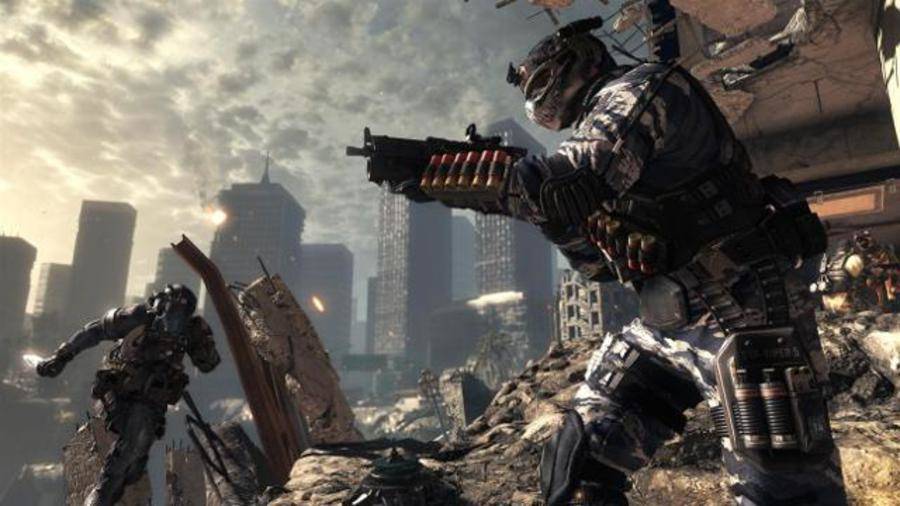CS:GO v Call of Duty: Why Does CS:GO Own The First-Person Shooter Esports Scene?
Counter-Strike: Global Offensive has firmly established itself as the leading first-person shooter within the flourishing esports sector after vanquishing rival title Call of Duty. This month, CS:GO achieved its highest average player count of all time and it continues to go from strength to strength, seven years after it was launched. It has enjoyed remarkable longevity in the fickle gaming industry and that is mainly a result of its success within the competitive gaming scene. These are the top five reasons why it has reigned supreme as an FPS esport.
Multiplayer Focus
CS:GO is specifically designed as a multiplayer FPS that pits two teams against one another and demands they eliminate one another while completing a secondary objective. That leaves it perfectly positioned to conquer the world of esports. Competitive gaming is dominated by multiplayer titles like League of Legends and Dota 2, and CS:GO has a relentless focus on teamwork and strategy, so it fits the mould beautifully.
Call of Duty has historically focused on single player campaign modes, and multiplayer was typically an afterthought. It has recently changed tack as the latest installment, Call of Duty: Black Ops 4, was the first title without a traditional single-player campaign mode. The Solo Missions mode allows you to delve into the backstories of the game’s multiplayer mode, but the focus in now on teamwork.
However, it is a little late to the party, as CS:GO has been refining its offering through consistent updates since 2012 and it has built up a lot of momentum. Its leading stars are millionaires with huge social media following,, its Twitch viewer base is colossal and it boasts all manner of famous teams. Call of Duty has a lot of catching up to do, but fans of the series were upset by the lack of a campaign mode, and the next title in the series – Call of Duty: Modern Warfare – has brought back the single-player campaign mode.
High Skill Ceiling
CS:GO has a low skill floor and it is very accessible, but it also boasts an extremely high skill ceiling. This has allowed a competitive scene to flourish. Fans love to watch the leading lights lock horns in tense matches, with heaps of cash and huge levels of prestige riding on the outcome. Watching a player like s1mple, dev1ce, NiKo or Stewie2K in action can be exhilarating, due to their sheer mastery of such a complex game. Fans can appreciate what they are doing, but they know they lack the skill to pull it off themselves, making it the perfect esport.
Call of Duty has enjoyed a remarkable level of commercial success – by February 2016, the series has sold more than 250 million copies and generated more than $15 billion for Activision, and those figures have continued to spiral – but it lags behind Counter-Strike in the esports arena, and you could argue that is a result of a lower skill ceiling. It is aimed at a general audience and it does not require as much effort to become good at the series, so it does not lend itself as well to competitive gaming.
Longevity
It is now seven years since CS:GO was launched and it has built up a strong and passionate community during that time. There have been a number of upgrades, which keeps the game fresh and dynamic, while exploiting advances in technology. But it essentially remains the same game and this consistency has allowed professional players to build up their skills over time, while it has gradually evolved. It is so popular now that you can easily place a bet on one of the csgo match betting sites to add some additional excitement while watching professionals fighting there way on international tournaments.
Activision is wedded to the cycle of releasing a new game every year and that is one of the key reasons behind the Call of Duty series commercial success. Millions of players abandon the game they have been playing each year and shift en masse to the new title. But the cycle requires different teams of developers working on the titles, and the gameplay can shift significantly each year. It is difficult for teams to establish themselves if the goalposts move so dramatically on an annual basis, which dents the series potential as an esport.
Some prefer to keep playing games from within the series. Call of Duty 4 retained a passionate base of competitive players long before Activision released newer titles in the sequence. But the developers were not giving it any love, whereas massive teams are constantly working on refining the offerings of esports like CS:GO, LoL, Dota 2 and even Fortnite. Perhaps one of the reasons Call of Duty has not been as successful within esports is that Activision does not appear to focus its efforts on competitive gaming. It is making more than enough money by simply selling exciting new titles to loyal gamers each year.
Free to Play Ensures CS:GO Continues to Grow
CS:GO went free to play in December 2018 and that allowed millions of additional gamers to discover the joys of the game. The leading esports like Dota 2 and CS:GO follow this model and it has been remarkably successful, as the developers make money through in-game microtransactions. It is a delicate balancing act, as you risk alienating players if you appear too mercenary, but if Valve can pull it off then it should ensure that CS:GO reigns supreme long into the future.
It also added a battle royale mode in a bid to protect market share from Fortnite, PUBG and other games in that emerging genre. Games like CS:GO will always be multiplayer FPS fun, and the hype around battle royale titles has seemingly settled, bringing players back. The next CS:GO Major looms large on the horizon and that has helped boost its popularity at a crucial time, as gamers are keen to watch star names compete against one another.
Established Infrastructure
The CS:GO esports scene is already steeped in a rich heritage. We have seen the rise and fall of dynasties like Fnatic and Astralis. Team Liquid is currently top dog, but the likes of Astralis, NaVi, Vitality and ENCE are all desperate to knock it off its perch, as you can see if you check out the tight betting odds.
The scene boasts dozens of established superstars, such as olofmeister, Magisk, dupreeh, coldzera, s1mple, FalleN, dev1ce and many more, who have all built up strong fan bases. There are many veteran pros and well-known teams, while the Major system is growing increasingly professional. Valve has already announced dates for the Majors in 2020 and 2021, allowing teams to plan properly, offer correct contract lengths and work out training schedules, while allowing smaller tournaments to fit in around them without any clashes.
CS:GO tournaments are broadcast live on TV, while Twitch blows up during the Majors. It also has one of the world’s most recognized ranking systems, giving players something to work towards. The Call of Duty esports scene is a lot smaller, players earn less, there are fewer pros and fewer fans. It has a lot of catching up to do, but Activision does not seem to have a huge appetite for that.




